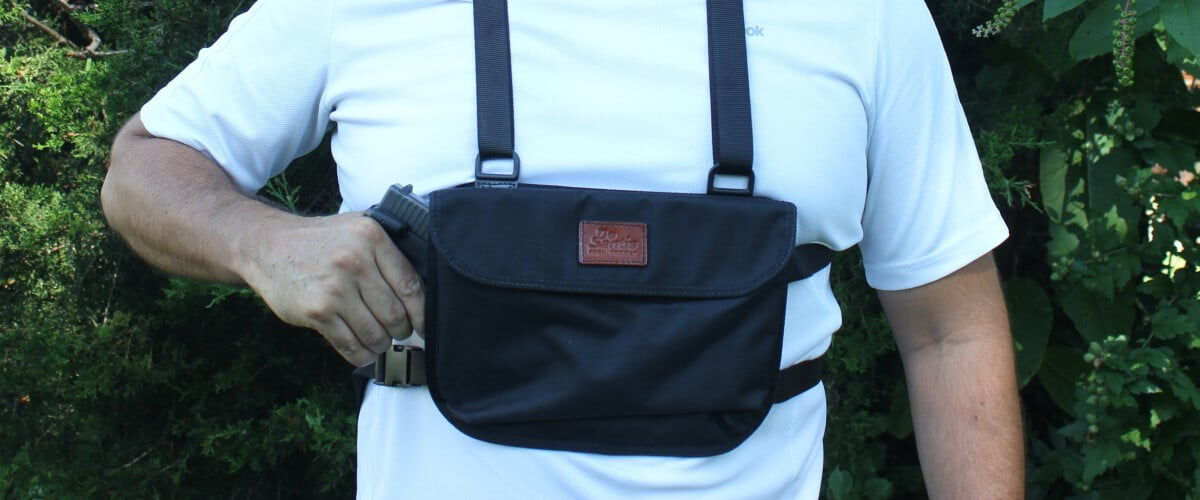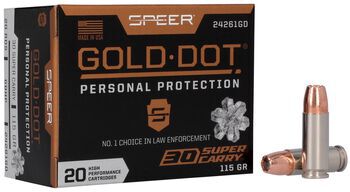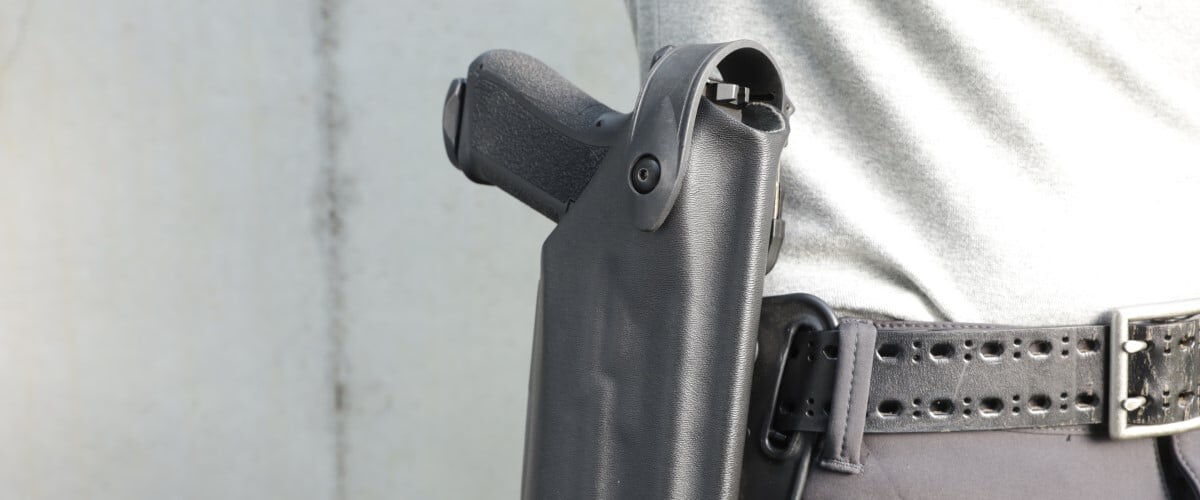
There is no one-size-fits-all approach to protection. Shooters are different, as are the situations they typically encounter. So, it’s not surprising that even the most tried-and-true carry positions won’t work for everyone.
That’s what we’re about to cover here. Let’s check out some of the lesser-used carry positions, explore their strengths and weaknesses, and give you the knowledge needed to decide if they should make your rotation.
Ankle
Ankle carry is one of the most specialized carry positions you’ll see, and its most obvious benefit is that the gun can be deeply concealed on the body so long as you are wearing appropriate pants. This makes ankle carry a popular position among law enforcement professionals and anyone else who wants to have a back-up firearm accessible should their primary handgun fail or fall into the hands of an attacker. Ankle carry for the primary defensive weapon is not particularly common, but some people find it to be the more comfortable than traditional belt carry options like strong-side and appendix.

Gold Dot Handgun Personal Protection
Our original Gold Dot line remains a benchmark for both self-defense and duty use, and it’s earned the trust of law enforcement world-wide. It features a pressure-formed lead core that’s bonded to an extremely uniform jacket a single atom at a time.
Buy NowAnkle carry does have downsides. First, the gun is not as accessible from a standing position as other carry methods. You’ll likely have to drop to a knee to retrieve the firearm (which can be beneficial when cover is available) and that requires a certain level of flexibility some shooters may not possess. Depending on the holster design, I’ve found ankle carry is not particularly comfortable and obviously isn’t an option if you aren’t wearing long pants. I’ve also noticed some shooters (particularly those new to ankle carry) develop an uneven gait with the weight of the ankle rig until they grow accustomed to the feel.
Shoulder
Shoulder holsters were popularized by police television shows years ago, but these holsters are still functional under some circumstances. We often associate shoulder holsters with police detectives who wear jackets or sport coats to work, and there’s a sound reason for this. Shoulder holsters secure the firearm close to the body and provide quick access with this type of clothing. They’re also suitable for backcountry carry in bear country and, as in cross-draw, are comfortable when seated on an ATV or horseback. Shoulder holsters are also comfortable for large individuals who find belt or ankle carry uncomfortable.
For most of us, though, shoulder holsters are not the best primary concealed carry method unless you are wearing a suit or jacket every day, simply because clothing options are so limited. You must also find a shoulder holster with a harness that properly fits you (which can be more challenging than you might imagine) and you must carefully practice your draw stroke to prevent pointing the gun at bystanders or some portion of your own body.
Open
Open carry means the firearm is secured in such a way that it is visible (or open) while holstered. Generally, open carry means strong-side hip carry, and as with IWB strong-side carry this is beneficial because that is the position from which most shooters practice at the range. Open carry keeps the firearm rapidly accessible, which is why this is a good choice for a sidearm in bear country.
The major disadvantage to open carry is that your firearm is visible and, in some instances, accessible to others, and that makes it easier for an attacker to access. Strong side open carry also announces to others which is your strong hand which may be a disadvantage, and depending on holster position you may only be able to access the firearm with a single hand. Many experts recommend that an open carry holster offer some form of retention, and I agree with that principle.

One variation of open carry that I do employ frequently is chest carry, particularly when I’m in big bear country. My chest holster comfortably supports my 10mm Auto pistol and keeps it accessible when I am riding an ATV or bent over skinning game. The weight is distributed evenly, and it’s far more comfortable to carry a large revolver in a chest rig than a hip holster when covering lots of country on foot. The position also keeps the gun above my hips so I can wear waders or tall boots, which are part of the standard backcountry uniform in many places like Alaska.
Off-Body
Lastly, we come to off-body carry. It means the firearm is not attached to your body, but this can take many forms. Some people carry their guns in a purse or backpack, and others prefer a fanny pack. This makes it much easier and more convenient to conceal your firearm and allows you to comfortably carry even large handguns without the need to dress around them. I’ve carried firearms for years while running after a series of close encounters with aggressive dogs, and I still use a marathon-style pack because it is the most comfortable carry solution I’ve found.
The problem, of course, is gun security. If you become complacent you may leave your backpack and firearm behind, and that causes a very real issue. In some cases, the firearm can even fall out of a carry bag if not properly secured. Thieves can snatch a purse that’s on a table or even on your arm, and then the bad guy not only has your wallet and keys but your firearm as well. Off-body carry has its benefits, but I prefer a method that’s more secure for my daily carry.